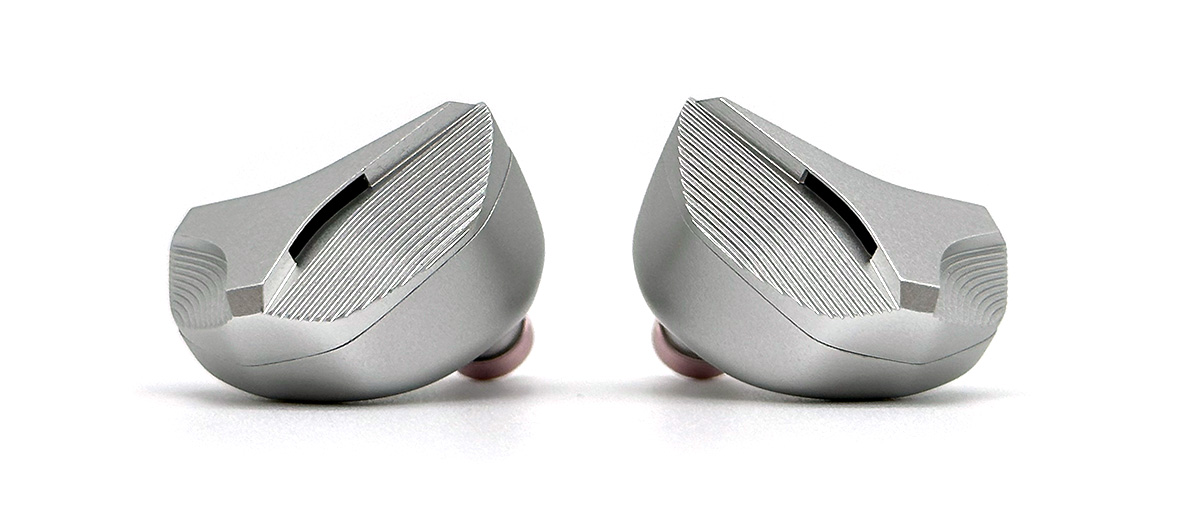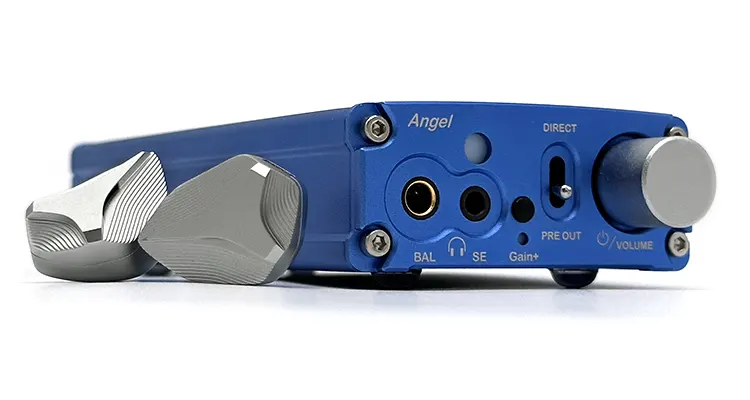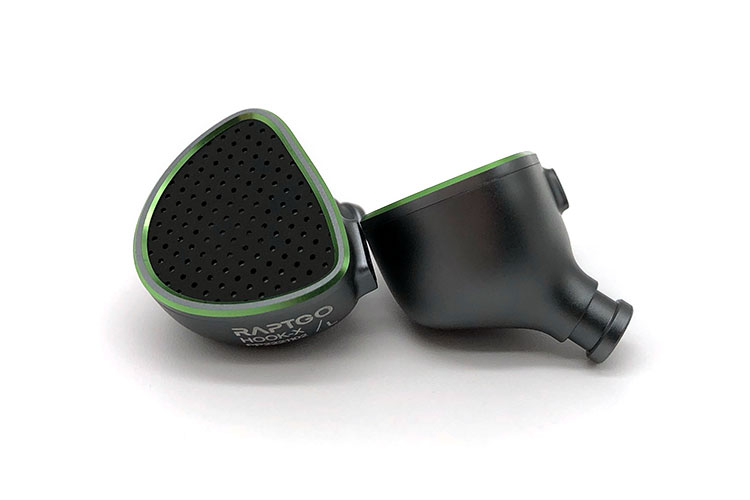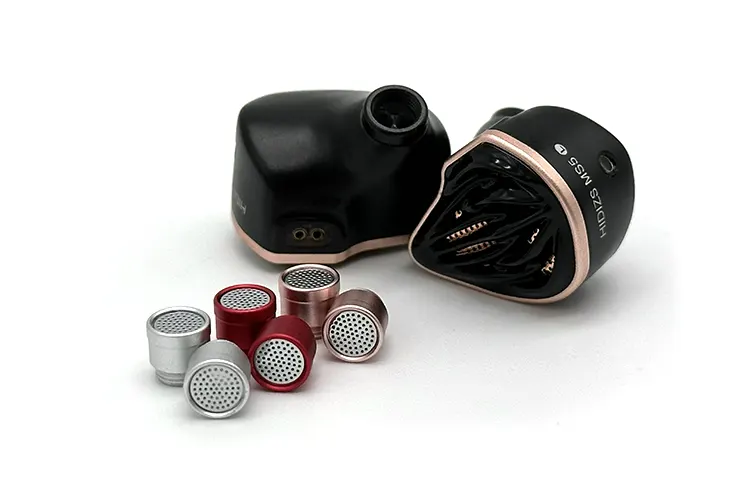Synergy
Efficiency
I wouldn’t shop for a desktop amplifier just yet simply because the MP145 is using planar technology. Its efficiency, while on the lower side, is still within the expected bounds of portable sources like the 600mW capable Chord Electronics Mojo 2.
It poured clean power to the 30Ω impedance drivers wherein at just below the high gain point it already matched the 104dB sensitivity to my normal listening volume.
Going to the more muscular EarMen Angel carefully drove the MP145 exciting the unit with tons of power. The MP145 still asked for 10-15 clicks from zero before it began singing.
Pairings
The Angel and the Mojo 2 are priced closely together both offering a nice tonal balance that doesn’t upset the innate talent of the gear attached. It is not to be denied nonetheless that the Mojo 2 has a cheerier side than the serious DAC/amp of EarMen with this pairing.
Beginning with guitars, the Angel adds more brilliance to strings while at the same time positioning them in a marginally wider area. The Mojo 2 performed a more organic version than the Angel satisfying tonally with each pluck.
Pianos layered more insightfully with the Mojo 2 as I get a less resolving answer from the other device. The Mojo 2 tweaked the reverb to be easier to notice in combination with the higher instrument mass it provides.
The Angel has a tighter response for broad beats. On the other hand, the Mojo 2 is more sizeable and delineation is a bit more smoothed out. Having a lighter timbre, the Angel works to maximize the potential of the planar drivers to not appear dull.
Select Comparisons
Raptgo Hook-X
Technical
The MP145 has a slightly bigger planar driver than the Hook-X but Raptgo mixed in a second custom PZT driver in their design to enhance the treble response.
Aside from being a pioneer product in mixing planar and PZT, the Hook-X also punched open the face to reduce ear fatigue and open the soundstage.
I don’t know how far apart the effect of having an open back is from the “breathing” vents of the MP145 but Hidizs is notably trying to improve the experience by including this feature.
Design
Visually, the Hook-X has a mix of shades and materials that make it a standout unit, nonetheless. The MP145, especially in silver, expresses a more monotonous manifestation that is only stirred by the rather uniquely contoured face.
There is no special meaning around the perforated surface of the Hook-X aside from the tuning returns it provides. This gives the bigger earpieces of the MP145 a much busier-looking execution if we’re talking about the shape of the chassis since the lines on the Hook-X are simpler all around.
Performance
The Hook-X is also a planar IEM although comparatively, it is not as agile as the MP145 in picking apart subtler details in the low end. It is showing more width and volume but I like the more natural tonality of the MP145.
In having a dip in the midrange, the Hook-X plays less intimate. Nevertheless, strings on the MP145 have a more pliant nature so it is gentler on the ears even though it is not as staged back as the Hook-X.
The MP145 shows a more melodic and less hurried-sounding violin that is not as thinly tuned as the Hook-X. The same with brass instruments, the Hidizs IEM seemed better voice even though the Hook-X is the one with the talent to diffuse horns with supplementary airiness.
In a more detailed scenario, the MP145 has better dynamics to handle electric guitars well so the texture is more etched. The Hook-X in comparison sounded a bit safe.
Hidizs MS5
Technical
The hybrid MS5 uses four Sonion balanced armatures together with a custom 10mm dynamic driver, a more familiar configuration for Hidizs IEM.
Looking at the MP145, its guts are modified in contrast. The lone 14.5mm planar driver of MP145 is single-handedly covering the entire frequency range whereas the MS5 is splitting the task among the five drivers available inside.
With the same sensitivity level of 104dB, the MS5 will be the easier monitor to drive with its lower 5.3W impedance.
For the particular listener, both sets are designed with three different listening styles to suit a broader range of tastes. The nozzle is simply removable and can be interchanged among the available filters.
Design
While slightly lighter and smaller than the MP145, the MS5 is also an already dense IEM that sits on the larger side when worn. The MP145 packing a huge 14.5mm driver managed to overshadow the MS5 even though the latter is a more complex hybrid.
Material choice and design on both units are trading punches with each other as the two are fascinatingly inspired and deeply bespoke.
The MS5 adopts a more elegant air in the end if I’m honest considering the raw definition of the MP145 against the polished faceplate of the other.
Performance
Letting the sub-bass die down naturally, the MS5 stresses the low-end extension less which at times can be too quiet. The difference in showing the edges of a delineated bassline however is stark as the MS5 dives deeply for elevated finesse.
While there is a bit more shout on the MS5, its reward comes in the vastly extended soundstage and silkier midrange. Combined with layering and separation gains, instruments and singers also have a lot more room to play around.
The MS5 is temperate as well in the higher frequencies so electric guitars are not aggressive like the MP145. It outperforms the MP145 in the final execution sifting through nuances with more insight and accuracy.
A live audience on the MS5 is played a little bit colder than the more roaring claps bared by the MP145. It is the MS5 however that filled the center stage better creating a more realistic and layered space even though it is less cheerful.
Our Verdict
Hidizs seems to know what they’re doing since never in my time with the MP145 did I feel like I was holding a prototype since technically it is still yet to be released on Kickstarter.
If I’m to wish for something, it’s to develop the airiness in the midrange and to make the definition of subtleties more refined. Likewise, even with the huge chassis, the comfort could still have been perfect if not for the ear guide that protrudes far from the natural curvature of the ear.
In any case, I’m quite excited for the MP145 to reach more people since I think it has a good chance of satisfying audiophiles.
With three tuning filters to choose from including a nice default sound signature, the MP145 may be a newcomer but it already has a lot going for it.
Hidizs MP145 Technical Specifications
- Driver: 14.5mm Ultra-large Planar Magnetic Driver
- Appearance: Aviation Aluminum Alloy Integral Molding Shell
- Pneumatic Sound Tuning Filters: High, Balanced, Low
- Cable: High-purity silver-plated single-crystal copper wire mixed with 4 strands, length 1.2m
- Connector: Detachable Cable with 0.78mm 2-pin gold-plated socket and Pure Copper Plating Shell
- Plug: Gold-plated Pure Copper Plug
- Weight: Approx. 19g (excl. earphone cable)
- Frequency Response: 20Hz-40kHz
- Sensitivity: 104dB
- Impedance: 30W





